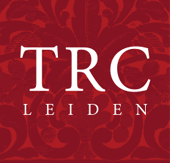The Middle East is known to many as the ‘Cradle of Civilizations’, and indeed, agriculture and settled life quickly developed in this part of the world from ca. 9,000 BC onward. The region saw the subsequent rise of towns and cities and the first attestations of the use of a script and written language, sometime in the third millennium BC.
Great civilizations, such as those of the Babylonians, Hittites, Assyrians and, in neighbouring Egypt, that of the Pharaohs developed here, but the region was also coveted by outsiders and at successive times occupied by Greeks, Romans and Turks, and more recently the British and French. Moreover, it functioned as a gateway between East and West, with goods such as silks and precious dyestuffs travelling through its ports and towns.
The history of dress in the Middle East is defined by its cultural, ethnic and religious diversity, and by the outside influences that came with foreign occupiers and international trade. After the Arabs conquered a large part of the region in the seventh century, a Middle Eastern dress tradition developed out of an amalgam of local and external styles. Important new elements that subsequently became popular include the turban and tailored garments.
 Photograph of a street in Port Said, Egypt, late 19th century, showing people wih Arab, Turkish and Western styles of dress. TRC 2017.2287.The rise in power, some thousand years ago, of the Central Asian Turks under the Seljuqs, the Mamluks and finally the Ottomans, who dominated the lands from the early sixteenth to the early twentieth centuries, caused another important shift in dress traditions. Dress was increasingly institutionalized and various garments and outfits were restricted to certain groups. Ottoman Turkish modes of dress included layered shirts and coats, worn open or closed with a row of ties or buttons, as well as wide sleeves and various types of head coverings. Aspects of Ottoman costume, such as the kaftan and the yelek coat, can still be spotted in local dress to the present day.
Photograph of a street in Port Said, Egypt, late 19th century, showing people wih Arab, Turkish and Western styles of dress. TRC 2017.2287.The rise in power, some thousand years ago, of the Central Asian Turks under the Seljuqs, the Mamluks and finally the Ottomans, who dominated the lands from the early sixteenth to the early twentieth centuries, caused another important shift in dress traditions. Dress was increasingly institutionalized and various garments and outfits were restricted to certain groups. Ottoman Turkish modes of dress included layered shirts and coats, worn open or closed with a row of ties or buttons, as well as wide sleeves and various types of head coverings. Aspects of Ottoman costume, such as the kaftan and the yelek coat, can still be spotted in local dress to the present day.
In the late nineteenth and twentieth centuries, European fashion, in their turn, had a significant impact on what was worn by the Middle Eastern elite. Upper-class women travelled to Paris for the latest fashions, and photographs from the period show men wearing three-piece suits and women in Victorian gowns. Often these were combined with local elements, such as the fez for men and veil for women.
After the dissolution of the Ottoman Empire in 1922, the Middle East came under the control of the French and the British and the influence of European dress forms became more pronounced. Moreover, several independent governments, such as those of Turkey, Egypt and Iran, stimulated and even imposed Western-style (but locally made) garments for government employees, as part of an effort to modernize the newly fledged nations.


